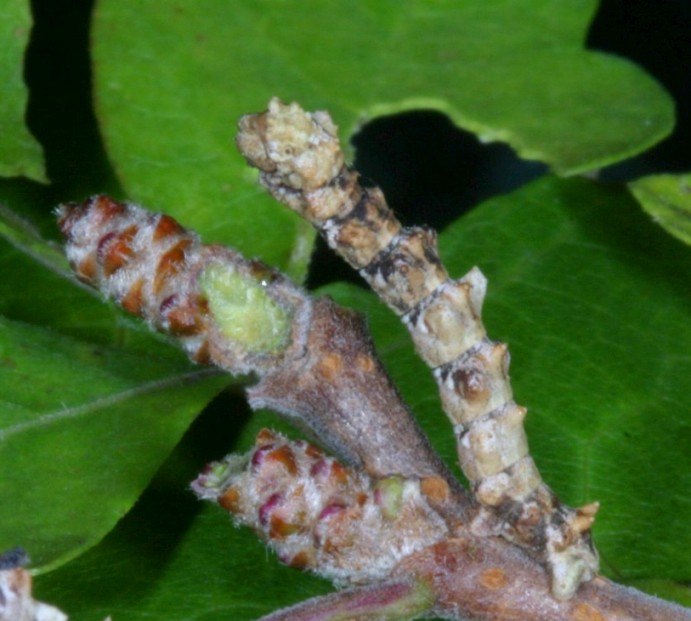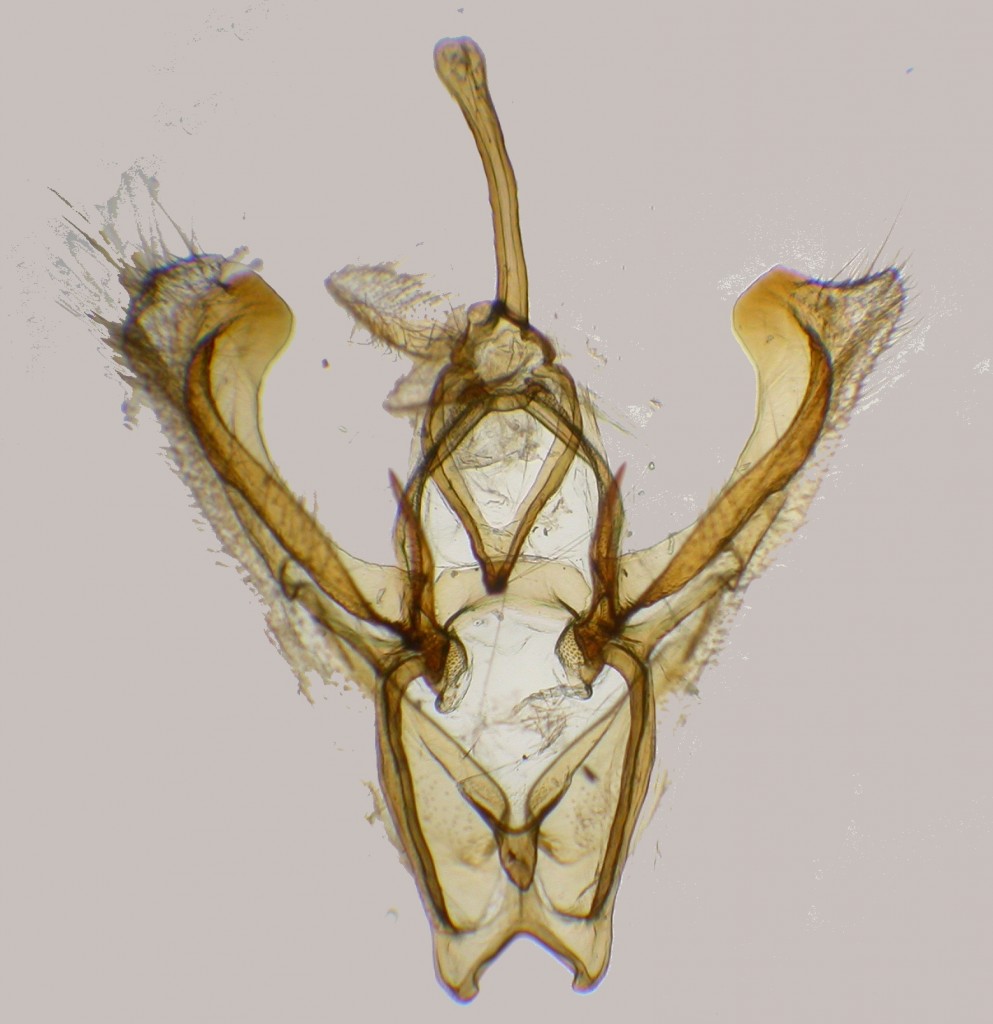Genitalic structures
One of the most commonly used features to distinguish and identify moth species are the tiny internal structures of male and female genitalia. These structures are often elaborate and may have very distinctive differences that allow more discrimination than outward markings on the wings or body. To observe these very small, internal structures, researchers need to perform a microdissection to remove the structures, then stain them, fix them in an open position, and mount them on a microscope slide. (Below, a photograph of the male genitalic structures of Nemoria intensaria, found in the GSENM)
These genitalic structures are actually very tiny. The magnified structures above can be seen on the microscope slide below where they are just barely visible in the center of the slide – they are only about 3 millimeters wide. 3 males compared.
Larvae
The larval stages of native moth species often have their own distinctive markings and morphology, so collecting eggs and rearing caterpillars is an important part of understanding species diversity.
 Above, a Nemoria obliqua caterpillar (found in the Grand Staircase Escalante National Monument) on the leaves and stem of skunkbush sumac, Rhus trilobata.
Above, a Nemoria obliqua caterpillar (found in the Grand Staircase Escalante National Monument) on the leaves and stem of skunkbush sumac, Rhus trilobata.


